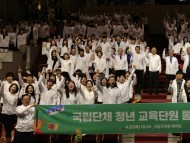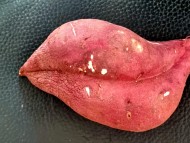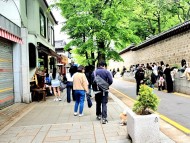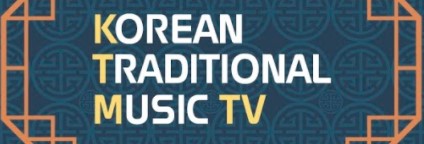2024.05.03 (금)
‘Hanbok-wearing’To Become National Intangible Cultural Heritage
-Cultural Heritage Administration recognizes the culture of hanbok-wearing and how it embodies the Korean people’s identity and values
- Michael Lammbra…
- 등록 2022.04.01 22:36
- 조회수 1,324
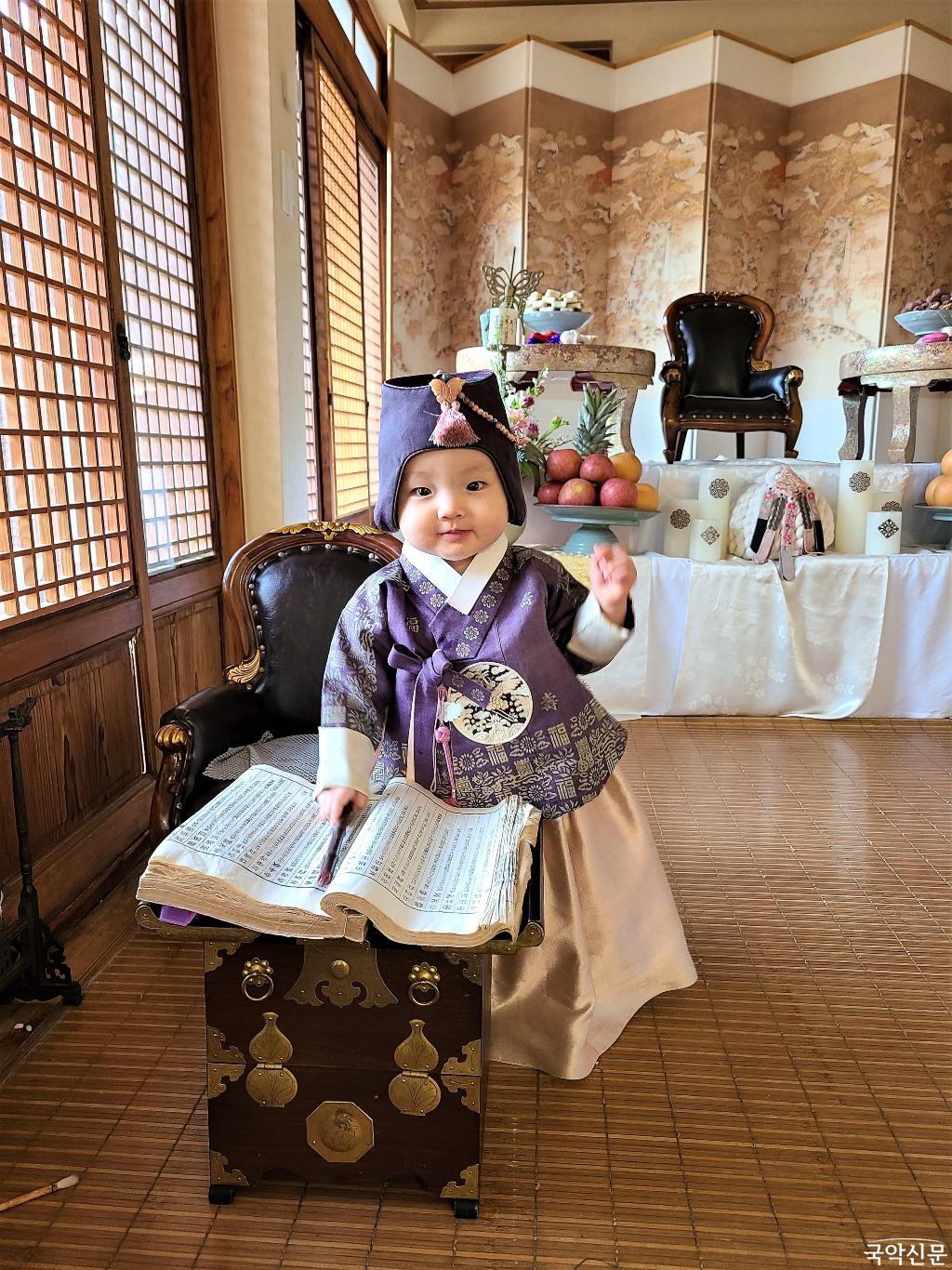
The Cultural Heritage Administration (Administrator Kim Hyun-mo) plans to designate hanbok-wearing as a National Intangible Cultural Heritage item.
Koreans have worn the traditional Korean attire in one way or another in their lives throughout history. It is a traditional way of life and knowledge that embodies the Korean people’s identity and values.
Hanbok consists of the top and the bottom which can be either a skirt or pants. Otgoreum, the ribbons knotted to close the top, completes the look. Hanbok is designed so that people wear the bottom first and then the top. The whole experience of wearing hanbok is, in itself, a culture as it involves unique etiquette and formalities and is executed differently for different occasions ? ceremonies and rituals or traditional holidays or recreational events.
Hanbok-wearing has been passed down within families. Koreans today generally wear the traditional wardrobe on traditional holidays like Seollal (the Lunar New Year) or Chuseok (Korean equivalent of the thanksgiving holiday), as well as social rituals like first birthdays, weddings, funerals and ancestral ceremonies. It is true that contemporary Koreans are wearing hanbok far less than their ancestors. However, the fact that people wear hanbok to show their respect remains unchanged.

Before the industrialization, housewives would make new hanbok for their family members and mend them when necessary, at home. In particular, on traditional holidays Koreans would get new fabric and make clothes. Such a custom is called Seolbim for Seollal, Chuseokbim for Chuseok and Danobim for Dano (which falls on the fifth day of the fifth month of the lunar calendar). It was customary that Koreans got themselves new hanbok for holidays that mark the beginning of a new season with hopes for good health and peace.
As can be seen here, hanbok to Koreans is more than just a piece of clothing, but an important medium through which they showed respect and expressed wishes for good health and peace, which makes it an important intangible asset.
Ancient Koreans are also seen donning hanbok in various artifacts and records like the tomb murals from the Goguryeo dynasty (37 B.C.- A.D. 668), clay figures dating to the Silla dynasty (57 B.C.?A.D. 935) as well as historical documents from China. It was during Korea’s three kingdoms period (57 B.C.-A.D. 668) that the two-piece, top-and-bottom structure of hanbok was completed. Since then, its form evolved and transformed repeatedly until the Joseon dynasty (1392-1910) which was when the prototype of hanbok that we know of today was established. In April of 1900, a new regulation on the dress code of civil servants was proclaimed, which changed civil servants’ official attire to Western-style suits from hanbok. With this, Koreans have begun to wear both Western-style suits and hanbok, after wearing hanbok only for thousands of years.
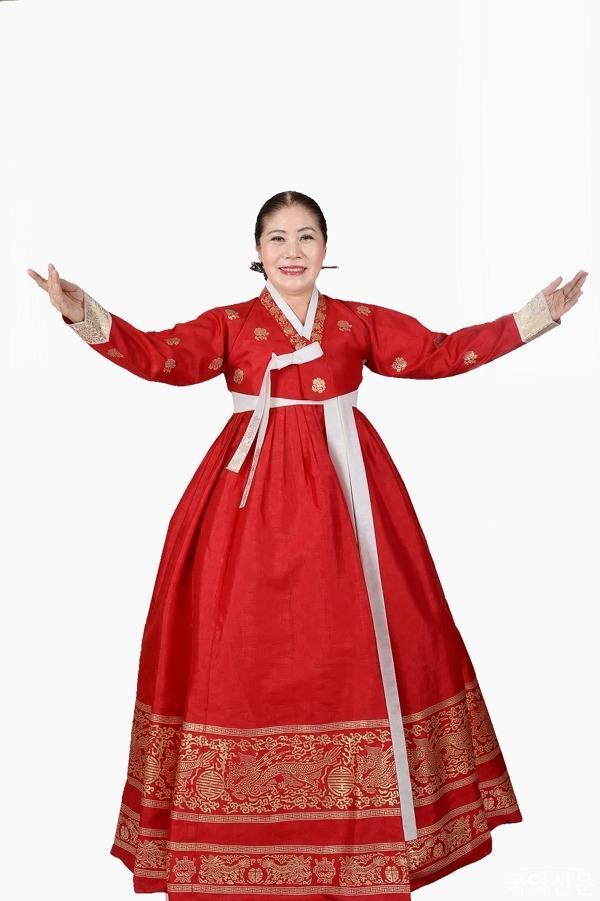
It is believed the word ‘hanbok’ is used in order to distinguish Korean wardrobe from that of the Western culture since Korea’s opening of its ports to the outside world in 1876. (Han means Korean.) However, the exact origin of the word ‘Hanbok’ is unclear. The word ‘Joseon-ui’ or ‘Joseon’s attire’ is used in an 1881 record of Seungjeongwon Ilgi (the diaries of the royal secretariat), while the word ‘hanbok’ can be found in an 1894 article from a Japanese newspaper. What is clear is that even in the years leading up to the introduction of Western-style clothing to Korea, hanbok embodied Koreans’ lifestyle and culture as well as societal and national spirit.
There are special types of hanbok for certain occasions. ‘Baenaet jeogori’ is the hanbok for newborn babies. For babies’ fragile skin, it’s made with as few seams as possible. The hanbok known as ‘Kachi durumagi’ was traditionally worn on New Year’s Eve ? thus the name, as New Year’s Eve was also known as Kachi seollal. Sometimes, children donned Kachi durumagi on New Year’s Day. Today, contemporary Koreans generally dress their babies with Kachi durumagi on their first birthday party. On this specific outfit, the cuffs have a bright array of colors which reflects hopes for fighting off evil spirits and ushering in good fortune.
During a wedding ceremony, a bride traditionally wears a green Jeogori (hanbok top) with crimson skirt as well as ceremonial outerwear Hwalot or wonsam, plus Jokduri or flower headwear on their head. For funerals, a shroud for the dead would be made without a knot as it was believed knots bring a bad luck for the descendants. Koreans also believed that if they made the shroud in advance on a leap month for someone when they are still alive, he or she would live a long life.
Introduction of Western-style clothing brought about changes to Korean clothes and lifestyle. For daily wear, Koreans began wearing Western clothes mostly because they were more convenient. Hanbok also became simpler in its form and became something that Koreans reserved for special occasions. Nonetheless, what hasn’t changed is that wearing hanbok is a way of showing respect and bringing about a special version of oneself.
‘Hanbok wearing’ should be designated as national intangible culture heritage, as it ▲has a long history, being passed down through generations across the Korean peninsula, ▲can be found in relics and records like murals of Goguryeo tombs, clay dolls of Silla and historical documents of China, ▲is being studied extensively in various areas like history, aesthetics, design, fashion, technology, management, marketing, industry and education and continues to be a coveted study subject moving forward, ▲is still considered a way to show respect at traditional holidays and rites of passage, having been passed down within families, ▲and furthermore, is in itself cherished traditional knowledge not just in families and communities but also in production and research entities.
But the Cultural Heritage Administration will not recognize a specific group or person in the designation, as it is a cultural tradition that all Koreans across the Korean peninsula keep, as are the cases with ‘kimchi-making’ and ‘jang-making (Korean sauce and paste making).’
* National Intangible Cultural Heritage items that do not recognize a specific group or person (Total: 14 items):
Arirang (Traditional folk song); Jeda (Tea making); Ssireum (Korean wrestling); Haenyeo (Women divers); Kimchi Damgeugi (Kimchi making); Jeyeom (Traditional salt making); Ondol (Underfloor heating system); Jang Damgeugi (Korean sauce and paste making); Traditional Fish-Eosal (Fishing weir); Hwalssoki (Traditional archery); Insam Jaebae and Yakyong Munhwa (Cultivation of Ginseng and its medicinal application); Makgeolli Bitki (Makgeolli making and sharing); Tteok Mandeulgi (Tteok making and sharing); Getbol Eoro (Tidal flat harvesting)
The Cultural Heritage Administration will receive opinions for 30 days on the planned designation of hanbok-wearing as national intangible cultural heritage, before making a final decision. People can share their views on the designation through the administration’s website (http://www.cha.go.kr).
- [] 제6회 울진금강송 전국국악경연대회(06/08)
- [] 제29회 대통령상 한밭국악전국대회(07/06-07) (무용/기악/성악)
- [] 제8회 목담 최승희 전국국악경연대회(06/01) (판소리,기악)
- [] [서울]제28회 전국판소리경연대회(06/15-16)
- [] 제32회 대전전국국악경연대회(06/01-02)
- [] 제16회 순천 낙안읍성 전국가야금병창경연대회(05/25-26)
- [] 제18회증평국악경연대회(05/11)
- [] [군산]제32회 전국청소년민속예술경연대회(05/18)
- [] 제42회 전주대사습놀이 학생전국대회(5/18∼6/2)
- [] 제50회 전주대사습놀이 전국대회(5/18~6/3)
- [] 제20회 전국대금경연대회(06/08-09)
- [] 제4회 함양 전국국악경연대회(05/12)
- [] 제18회 대한민국 전통예술무용·연희대제전(06/09)<br>무용(전통무용…
- [] 제48회 부산동래 전국전통예술경연대회(06/15-16)(무용.기악)
- [] [부여]제1회충남전국청소년국악경연대회(05/04)(판소리.기악.타악)
- [] [광주]제21회 대한민국 가야금병창대제전(06/16)
- [] 제18회 과천전국경기소리경창대회(05/04)
- [] 제11회 곡성 통일전국종합예술대전(06/15-16)(판소리.무용, 기악,…
- [] 제24회 인천국악대제전 전국국악경연대회(05/25-26)
- [] 제26회 창원야철전국국악대전(07/06- 07)
- [] 2024 무안장애인 승달국악대제전(06/01-02)
- [] 제22회 무안전국승달국악대제전(06/01-02)
- [] 제10회 전국공주아리랑민요경창대회(05/26)
- [] 제17회 상주전국국악경연대회(05/19)(성악/무용·연희/기악)
- [] 제10회 전국밀양아리랑경창대회(05/26)
- [] 제21회 강남전국국악경연대회(05/22)(무용/타악/판소리/민요)
- [] 제26회 서편제보성소리축제 전국판소리 고수 경연대회(05/04-05)
- [] [순천]제10회 낙안읍성 전국 국악대전(04/27-28)
- [] 제29회 안산전국청소년국악경연대회(05/26)
- [] 제26회(통합58회) 여수진남전국국악경연대회(05/18-19)
- [] 제51회 대한민국 춘향국악대전 경연대회(05/05)(05/11-12)
- [] 제33회 고령전국우륵가야금경연대회(04/26-27)
- [] [부평]제8회 전국 청소년국악경연대회(05/11)(관악/현악/성악)
- [] 제22회 구례전국가야금경연대회(05/04-05)
- [완도]제24회 장보고국악대전 전국경연대회(05/05-06)(무용/판소리…
- [] 제23회 대한민국 빛고을 기악대제전(05/25-26)
- [] [인천] 제10회 계양산국악제(04/26-27) (풍물,사물, 기악,민요…
-

[수요연재] 한글서예로 읽는 우리음악 사설(191)<br>원주아리랑
원주아리랑을 쓰다. 한얼이종선 (2024, 한지에 먹, 40× 63cm) 아침에 만나면 오라버니요 밤중에 만나면 정든 님 일세...
-

[금요연재] 도자의 여로 (143) <BR> 백자철화편병편과 수물(受物)편
같은 백자가마터 출토품이라는 것도 이규진(편고재 주인) 편병은 병을 만든 후 앞과 뒤를 누르거나 두드려 면을 만든 그릇이다. 조선 전기부터 후기까지 지속적으로 만든 기...
-

[국악신문] 정창관의 ‘국악-신반’ <21>
윤하림 해금풍류 II 산조 윤하림 해금풍류 II 산조. (2024년 Sound Press 음반번호없음) 2023년 윤하림 ...
-

[국악신문 소장자료] (42)아리랑 최초 취입 아리랑, ‘1913년 京城卵卵打令’
일본 니포노폰 취입 조선민요 ‘경성란란타령’, 1913년 Nipponophone 6170 SP음반.(국악신문 소장자료) ...
-

[Pick리뷰] 경성 모던걸들의 춤판 '모던정동'…"자유 갈망하는 모습 담아"
30일 서울 중구 국립정동극장에서 열린 국립정동극장예술단 정기공연 '모던정동' 프레스콜에서 출연진이 주요 장면을 시연하고 있다. 2024.4.30 ...
-

세실풍류, 박병천의 '구음시나위'에 허튼춤 선사한 안덕기
국립정동극장이 4월 한달간 진행하는 '세실풍류 : 법고창신, 근현대춤 100년의 여정'에서 23일 박병천의 '구음시나위'에 허튼춤 추는 안덕기 (사진=국립정...
-

세실풍류, 동해별신굿 민속춤사위를 제해석한 조재혁의 '현~'
국립정동극장이 4월 한달간 진행하는 '세실풍류 : 법고창신, 근현대춤 100년의 여정' 에서 조재혁의 '현~' 공연 모습. (사진=국립정동극장). 2024....
-

[Pick리뷰] 이호연의 경기소리 숨, ‘절창 정선아리랑!’
# ‘이호연의 경기소리 숨’ 공연이 지난 4월 26일 삼성동 민속극장 ‘풍류’에서 열렸다. 20대에서 60대까지의 제자들 20명과 5명의 반주자와 함께 경기잡가, 경기민요, 강원도...
-

[PICK인터뷰] 미리 만나 보는 '제94회 남원춘향대전'
[국악신문 정수현 전문기자]=대한민국에서 가장 오래된 축제로 손꼽히는 남원춘향대전(남원춘향제)이 오는 5월 10일(금)부터 5월 16일(목)까지 7일간 남원시 광한루원 일대에서 열...
-

[Pick리뷰] 모던연희극 ‘新칠우쟁론기’
4월 18일부터 20일, 남산국악당에서 아트플랫폼 동화의 모던연희극 ‘新칠우쟁론기’가 펼쳐졌다. [국악신문 정수현 전문기자]=지...
-

[PICK인터뷰] 국립국악관현악단의 채치성 예술감독을 만나다
[국악신문 정수현 전문기자]=봄비가 촉촉이 땅을 적시는 4월, 국립국악관현악단 예술감독으로 취임한 지 6개월이 된 채치성 예술감독님을 만났다. 그는 국악방송 사장, KBS 국악관현...
-

[Pick리뷰] 이 시대의 새로운 춘향가- ‘틂:Lost&Found’
2024 쿼드초이스_틂 (사진=서울문화재단 대학로극장 쿼드 나승열) [국악신문 정수현 전문기자]=대학로극장 쿼드의 ‘쿼드초이스’...
-

[Pick리뷰] 세 악단의 조화로운 하모니, ‘하나 되어’
지난 4일, 국립국악원은 국립국악원 창작악단, KBS국악관현악단, 전북특별자치도립국악원 관현악단 118명으로 구성된 연합 관현악단 무대 ‘하나되어’를 국...
-

[인터뷰] 김경혜의 '시간의 얼굴' 작품전, 16일 개막
칠순을 넘어서는 길목에서 중견작가 김경혜(영남이공대 명예교수) 작가의 열번째 작품전이 오는 16일부터 25일까지 10일간 대구시 중구 슈바빙 갤러리에서 열린다.전시되는총 50여 개...


